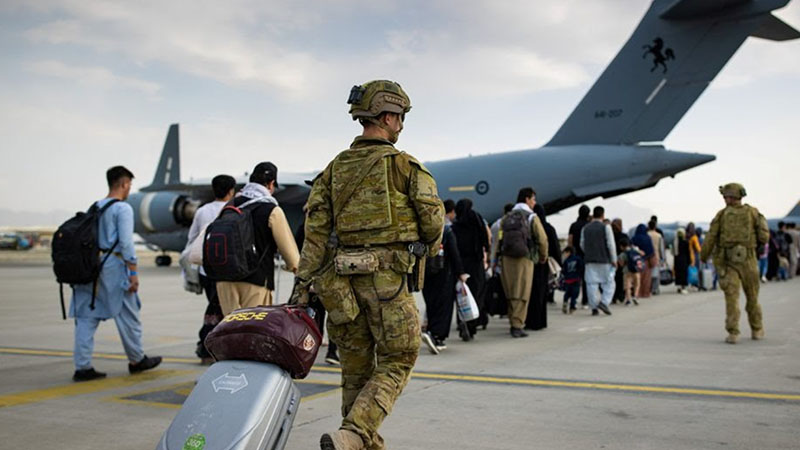Only one month after the deadly 9/11 terrorist attacks, Washington initiated America’s longest-lasting war in its 300-year history. The attacks were conducted by the terrorist group known as Al-Qaeda. Nineteen of their members hijacked four American airliners and used them to attack key targets such as the Pentagon and the World Trade Center. The other plane was retaken by the passengers but ended up crashing in Pennsylvania. The total casualties of this attack were an astounding 2977 deaths. 7 days later on September 18, former President George Bush signed the 2001 Authorization of Use of Military Force which was passed by Congress almost unanimously. By doing this, it allowed for military action against suspected culprits and those aiding them without the need for congressional approval. This hasty and somewhat ill-advised entrance into the War in Afghanistan led to the inevitable embarrassment of the United States’s withdrawal two decades later.
Initially, several members of the United Nations joined the United States in invading Afghanistan. However, many of these nations withdrew shortly after the invasion, leaving the United States with the Afghan Army, and a small coalition of NATO member states. Against them were the Taliban, al-Qaeda, and other Islamic extremist groups. After 19 years and 8 months, the United States’ withdrawal from Afghanistan led to the end of the war in Afghanistan and signaled the ascendancy of the Taliban as the de-facto rulers of Afghanistan. Over those years, ~2,500 American service members have been killed, with an additional 20,000 wounded in action. Additionally, ~3,800 American contractors were killed. From a civilian standpoint, ~500 aid workers and journalists died. It is important to note that officially, the United States never fought a war in Afghanistan, as Congress never declared war. When the invasion began, 9/11 was very fresh in most people’s minds; the United States’ initial invasion was less than a month after the catastrophic events in New York. There was an 88% approval rating at the start of the war, with over 70% wanting a withdrawal by the summer of 2021. It seemed to become an endless war, with no conclusion in sight, something the citizens did not want to continue.
With the fast-approaching 20th anniversary President Donald Trump was eager to begin the United States’ withdrawal from Afghanistan. In February 2020, the Trump administration made a withdrawal agreement with Taliban leadership. This plan called for the Afghan government to set 5000 Taliban fighters free and set a date for the initial withdrawal, May 1, 2021. President Trump soon diminished troop numbers from 13,000 to little more than 2,500, despite the fact that the Taliban were still harassing the Afghanistan government and accepted Al-Qaeda members into their ranks. This plan was never completed as Trump lost the next election.
Under President Biden’s original withdrawal plan, the United States would have a multi-step withdrawal. The Pentagon would first pull out most of its personnel and shut an airbase. The main aspect of this approach that was assumed was the relative strength of the Afghan government. The Department of Defense believed that the Afghan government could hold off the Taliban for around another two years, however, this proved to be a miscalculation. The State Department would keep their embassy in Kabul, but the military presence would be gone. Biden hoped to have all troops out by September 11th, the 20th anniversary of 9/11.
Although President Biden’s plan went slightly awry, the United States and their allies successfully withdrew over 114,000 soldiers and civilians in a short time. This feat is an incredible show of the United States’ efficiency, but despite this, there were still many setbacks such as the thousands left behind and the increased Taliban presence around Kabul. Without the support of an integral ally, the weakened Afghan government quickly crumpled to the growing Taliban threat. Because of the inefficacy of the Afghan government, the United States can hardly be blamed for the ultimate resurgence of the Taliban and the crumbling of the Afghan government. If anything, this end result was inevitable, for the maintenance of the U.S.’s presence in Afghanistan was unsustainable.





